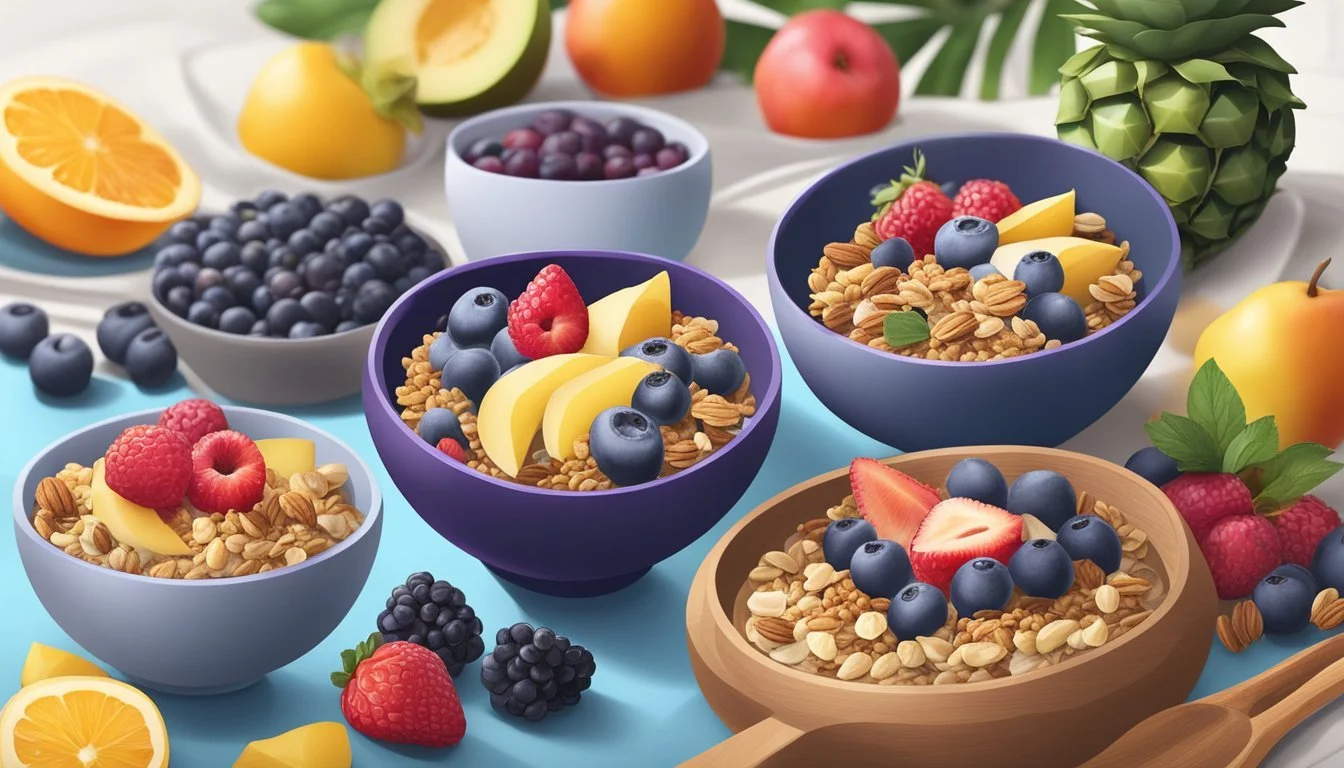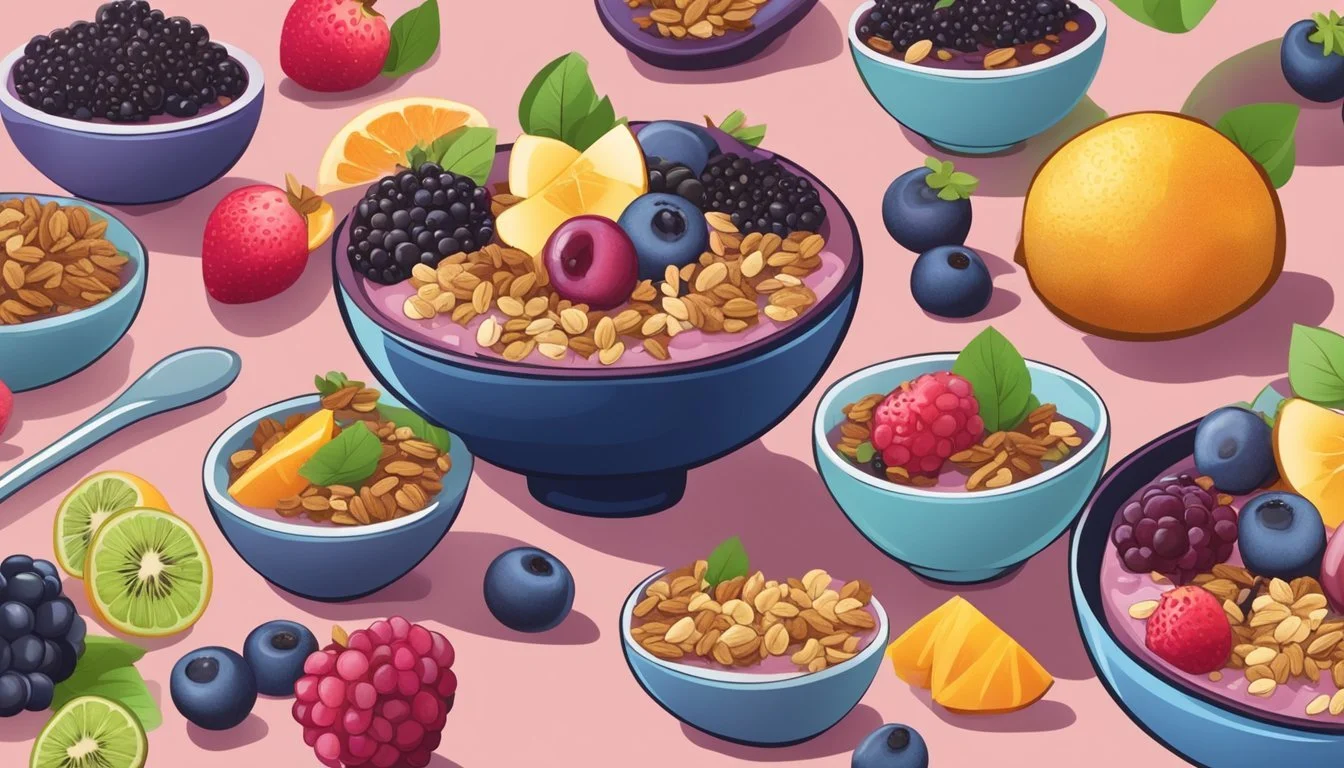How Long Do Freshly Prepared Acai Bowls Last?
Understanding Shelf Life and Storage Tips
Freshly prepared acai bowls are a popular health trend, beloved for their blend of nutritious ingredients and vibrant presentation. Their shelf life, however, is a crucial consideration for enthusiasts seeking to enjoy these bowls at their peak of freshness. Generally, a freshly made acai bowl should ideally be consumed within 24 hours. The composition of acai bowls often includes a mix of acai berry puree, fruits, and other perishable toppings which can quickly degrade in quality.
When preserved correctly, acai bowls can last in the refrigerator for up to three days. The key to extending the freshness lies in proper storage. Within 30 minutes of preparation, it is recommended to store an acai bowl in the fridge at a temperature ranging from 32°F to 40°F. These conditions help slow bacterial growth that can spoil the food.
Freezing is another option for those looking to maintain the longevity of an acai bowl beyond a few days. In the freezer, acai bowls can be kept for up to three months when stored in freezer-safe containers or airtight bags. This method is effective in preserving the flavors and preventing freezer burn, albeit with potential changes in texture once thawed.
Determining Shelf Life
When assessing the shelf life of freshly prepared acai bowls, several factors come into play including temperature conditions, ingredient composition, and storage methods. Understanding these aspects is essential to maintaining the quality of the acai bowls.
Temperature Factors
Acai bowls are highly sensitive to temperature; they should be kept in the refrigerator to extend their freshness. At room temperature, these bowls deteriorate quickly. Ideally, refrigerate them between 0°C and 4°C (32°F and 39.2°F) to slow down bacterial growth.
Signs of Spoilage
Spoilage can be identified via visual and olfactory inspections. Noticeable color change and an off smell are clear indicators. When toppings like fresh fruit, granola, nuts, and seeds become soggy or if the texture of the acai blend alters significantly, spoilage is likely.
Impact of Preparation and Toppings
The longevity of an acai bowl can be affected by factors like fresh toppings and the manner of blend. Bowls with honey or dried toppings may last longer, but fresh fruit deteriorates faster. Adjusting ingredient ratios mid-storage may impact texture and freshness.
Storing Acai Bowls
For proper refrigerating, use airtight containers to store acai bowls. Ensure to label the food with storage time. Storing in individual portions can be more practical for maintaining freshness and ease of thawing if frozen.
Freezing and Thawing
To freeze, use freezer-safe airtight containers or bags to avoid freezer burn. Thawing should be gradual, ideally in the refrigerator to preserve texture. Do not thaw and refreeze, as this can severely degrade quality.
Guidelines for Extended Preservation
For best results, consume within the first 24 hours. Frozen fruit toppings maintain quality longer, and storing in the freezer can extend the life up to 1 month. Always follow safe freezing and thawing instructions and observe proper storage practices for optimum preservation.
Nutritional Perspective
When considering the shelf life of acai bowls from a nutritional standpoint, one must assess the preservation of their ingredients' nutritional value, potential health benefits, and dietary compatibility over time.
Ingredients and Nutritional Value
The primary ingredient in an acai bowl is acai berries, which are known for their high antioxidant content. Antioxidants help combat oxidative stress and are integral to maintaining the freshness and nutritional integrity of the food. Acai bowls typically contain vitamins such as Vitamin A, minerals, and are a good source of fiber, which aids in digestive health. The nutritional value of an acai bowl also hinges on additional ingredients like fruits, nut butter, and chia seeds, which contribute healthy fats, protein, and variety of nutrients.
Nutritional Content of Typical Acai Bowl Ingredients
Ingredient Nutrient Amount Per Serving Acai Berry Puree Antioxidants High Bananas Fiber, Vitamins - Chia Seeds Protein, Omega-3 - Granola Carbohydrates - Nut Butter Healthy Fats - Honey Sugar -
Benefits of Acai Bowls
Acclaimed as a superfood, the acai berry forms a nutritious base for a healthy breakfast or snack. The high content of antioxidants, essential nutrients, and fiber in these bowls supports a well-rounded diet. By containing acai and other nutritious ingredients, an acai bowl can offer a plethora of health benefits, such as supporting heart health by reducing cholesterol levels, and providing sustained energy with its balance of calories, healthy fats, and protein.
Considerations for Dietary Restrictions
For individuals with dietary restrictions, acai bowls can be tailored to meet specific requirements, such as vegan or low-sugar diets. However, store-bought or pre-made acai mixtures might contain added sugars, affecting those monitoring their sugar intake. Acai bowls can also potentially be high in calories, depending on the portion size and toppings used. Those watching their calorie intake should be mindful of the components added to their bowl, opting for low-calorie toppings such as fresh fruit over sweeter, higher-calorie options.
Preparation Techniques
The key to ensuring a freshly prepared acai bowl lasts is starting with the proper technique. How one combines ingredients and stores the bowl greatly impacts its freshness and longevity.
Creating the Perfect Acai Bowl Base
For the base, blending frozen acai berries to the correct consistency is crucial. Using a high-powered blender, one should aim for a thick, smooth texture that’s comparable to soft-serve ice cream. To prevent an overly watery or icy base, which can accelerate melt and reduce freshness, it is advisable to add just enough liquid, like coconut water or almond milk, to blend the berries smoothly.
Choosing the Best Toppings
Toppings should complement the acai's flavor profile and add textural contrast. Common choices include:
Fresh fruits: Sliced banana, blueberries, and additional berries to introduce freshness with each bite.
Granola: Adds a crunchy element and sustains consistency over time.
Honey or coconut flakes: These can add subtle sweetness and a hint of flavor without overwhelming the acai base.
It is important to choose toppings that do not release a lot of moisture, as this can cause the bowl to become soggy when stored.
Homemade Acai Bowl Considerations
When preparing homemade acai bowls, consider factors that affect shelf life such as:
Temperature: Acai bowls should be kept chilled to prevent oxidation and spoilage. Foodborne illnesses can occur when perishable foods are kept at room temperature for too long.
Freshness: Utilizing fresh ingredients will not only affect taste but also how well the bowl retains its quality in storage.
Common Mistakes to Avoid
Avoid the following to ensure your acai bowl's longevity:
Over-blending: This can lead to a thin base that melts quickly.
Late freezing or refrigeration: The quicker an acai bowl is stored in cool temperatures, the slower the oxidation process.
Excessive toppings: Keep toppings to reasonable amounts to prevent overwhelming the acai base.
Each step, from crafting the base to selecting the toppings, plays a role in the deliciousness and lifespan of an acai bowl.
Serving and Consumption
A meticulously prepared acai bowl offers a delightful combination of taste and nutrition, best experienced fresh. The ability to preserve texture and temperature is crucial for maintaining its quality during serving and consumption.
Presentation and Serving Suggestions
One should serve acai bowls in a glass container, as it helps maintain the cool temperature and showcases the vibrant colors of the ingredients. Ideally, a bowl should be consumed with a spoon that complements its size, making each bite consistent in taste and texture. To enhance the experience, layer the ingredients thoughtfully to ensure that each serving includes a bit of all components.
Best Practices for Consumption
They are most enjoyable when consumed immediately after preparation. This is when their texture is most pleasing, and their taste, most vivid. To preserve the coolness, one should consume the acai bowl promptly, as room temperature can quickly affect its consistency and lead to a less refreshing experience.
Leftovers and Reuse
In the event of leftovers, it is safe to store an acai bowl in the refrigerator for up to 24 hours. Ensure sealing the container tightly to avoid exposure to air, which can spoil the product. For convenience, one can reuse leftover acai as a smoothie base, adding a liquid such as juice or milk to regain a desirable texture.
Making Acai Bowls at Home
Creating homemade acai bowls is a straightforward process that allows for a high degree of personalization. With careful ingredient selection and proper storage, anyone can prepare a nutritious and delightful acai bowl.
Selecting Quality Ingredients
The foundation of an acai bowl begins with choosing high-quality acai. One should look for acai puree packets which typically reside in the frozen section. Alongside the acai, fresh fruit such as bananas and berries, and supplements like nuts and seeds, boost the nutritional value of the bowl. It's crucial to ensure that all ingredients, particularly frozen berries and fruit, are at the peak of freshness to ensure maximum taste and benefits.
Step-by-Step Acai Bowl Instructions
Thaw: Begin by slightly thawing the frozen acai packets under warm water or in the refrigerator to soften.
Blend: Add the acai, a liquid base like almond or coconut milk, and fresh or frozen fruits into a blender. For texture, blend until smooth, ensuring there are no chunks.
Assemble: Pour the smoothie mixture into bowls and add toppings such as sliced fruit, granola, and a spoonful of yogurt.
Storage for Homemade Acai Bowls
To maintain freshness, homemade acai bowls should be stored in an air-tight container. Choices include glass or BPA-free plastic containers that can effectively ward off moisture and other contaminants. These bowls can be kept in the refrigerator if consumed within 24 hours or in the freezer for up to one month, though immediate consumption is ideal for best taste and texture.
Customizing Your Acai Experience
Every individual can tailor their acai bowl to their taste and dietary needs. Additional toppings can include a variety of nuts, seeds, or granola for crunch, or a drizzle of honey or a sprinkle of chia seeds for an extra boost of nutrients. The versatility of acai bowls allows for endless fruit mix-ins and topping combinations, making each bowl a unique culinary creation.
Exploring Acai and Its Origins
Before diving into the storied history of acai and its rise to fame in popular culture, it's important to understand its deep roots in the Amazon and its prominent role in modern diets.
The History of Acai
Acai (Euterpe oleracea) is a species of palm tree native to the Amazon rainforest, primarily flourishing in Brazil. Historically, indigenous tribes have utilized this fruit for its nutritional content, relying on its antioxidant properties for sustenance. The palm tree can reach up to 80 feet in height and yields small, dark purple berries about the size of grapes. These berries are pivotal to the daily diet of Amazon inhabitants, reflecting not just a source of food but a cultural artifact with centuries of significance.
Acai in Popular Culture and Dieting
The turn of the 21st century saw acai evolving into a symbol of healthy living and a staple in diet trends across the world, particularly in North America. Known for its purported health benefits, such as high antioxidant content, acai bowls have become a sought-after meal among health-conscious consumers. Acai has seamlessly integrated into popular culture, with its demand surging as both a dietary choice and a lifestyle trend, resonating with a global audience eager to embrace wellness and natural products from Brazil.






